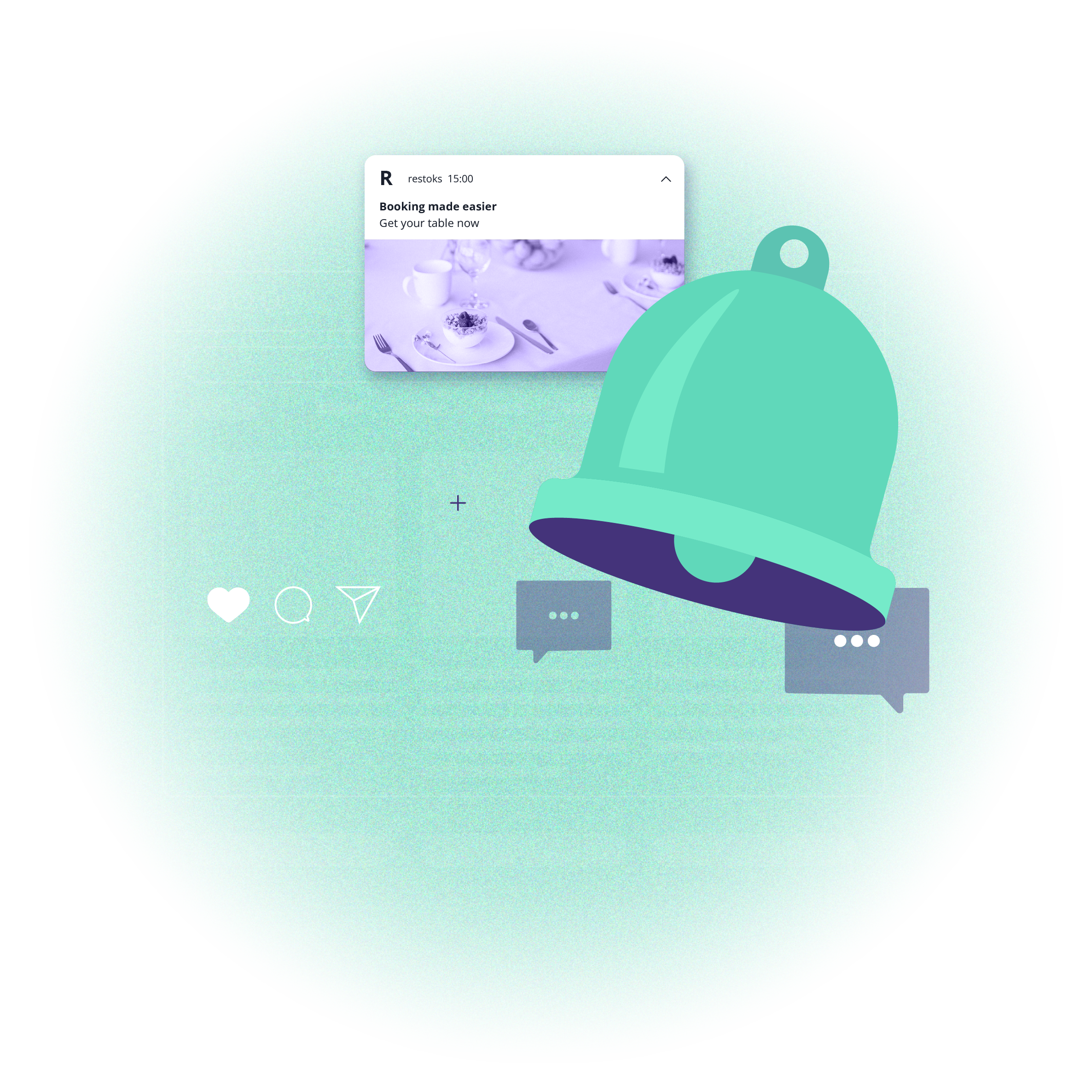Travel marketing: How to attract customers in the post-covid world
 Olha Lypnytska
Olha Lypnytska
Is the covid-19 pandemic over? Probably not, but the fact is, we are getting used to it. There are no more severe lockdowns, and with over 30% of the world's population vaccinated, we are keen to travel again. For hotels, airlines, and other travel companies, it's like a breath of fresh air. It's a huge opportunity but also a challenge that raises a valid question: What can you do to attract customers to visit your country/region/hotel in the post-covid world? Let's take a look at your options.
People all over the world have already become used to the post-covid world and its specific conditions. It’s clearly visible in the whole travel sector, which recently has been more and more active. What can we say about the current state of the travel industry? And what does it mean to companies operating in it?
The global travel thaw
When it comes to travels and everything travel-related, we can observe a global rebirth. Google Trends says so, too, although this trend it’s still in its infancy:

As you can see in the image above, around April 2021, Google users started to look for hotels (red line) and travel (blue line) more eagerly. There are several reasons for that. First of all, we are all simply tired of this pandemic. The global lockdown was a traumatic experience for many of us, and we simply want to go outside and travel freely again. Secondly, more and more people are vaccinated. According to Google, as of September 21, 2021, almost 3.5 billion people have already got at least one dose of the covid-19 vaccine. Over 2.5 billion have already been fully vaccinated.

Image source: google.com/search?q=how+many+people+are+vaccinated
Surely, there's still a long way ahead, but the long-time forecast is nothing but optimistic. A similar positive trend can be observed in airline traffic. According to FlightRadar24[1], we’re slowly returning to the average number of flights (black line) recorded before the pandemic (in 2019, red line):

Additionally, the list of countries and territories welcoming vaccinated tourists grows day by day and today comprises i.a.:
The United States
Canada
Austria
Croatia
Egypt
Finland
France
Italy
Poland
Portugal
Spain
Switzerland and many other countries.
Although countries, where tourism was an important part of the economy, report that they will be able to reach "before-covid" indicators only by 2024-2025, according to Skift, this market is already on the recovery path. In August 2021 the global Skift Recovery Index (a real-time measure of where the travel industry stands in recovering from the Covid-19 pandemic) stood already at 60 points in comparison to the same period in 2019.


What does it all mean for companies in the travel industry, i.e., hotels, guesthouses, airlines, car rentals, and travel agencies? It’s high time for you to roll up your sleeves and get to work! And that’s very good news!
Mission: Attract customers in the post-covid world
Today, travel companies have a whole range of means and tools to attract customers. The majority of them are available for free. Let’s take a closer look at some of them:
PRESENCE IN GOOGLE
This is your starting point. Today, customers want to know as much as possible about the hotel/place they will be staying at before booking it. The Google My Business (GMB) profile (and visibility on Google Maps along with it) plays a key role here, as it allows customers to:
Check reviews about the hotel/company (make sure they are good!)
View photos of the hotel, surrounding area, and nearby tourist attractions
Find out how to get there
Check the availability of rooms on a given date and even book a stay and find out what amenities the hotel/company offers.
This means that, at least in the travel industry, Google is becoming not only a promotional but also a sales tool. Setting up a GMB profile does not require too much work, and the benefits are indisputable.
Moreover, Google has the Google Hotels service within the GMF platform. It is a full-fledged hotel search engine that works in a similar way to Booking.com. Customers can search for listings by the standard of the hotel, guest ratings, amenities, and many other parameters. Here’s how it looks like:

Take a look at this profile of the Marriott Marquis hotel in Google My Business:

In this one small box, you have all the relevant information you need, including location, prices, reviews, and even the possibility to check rooms availability. And thanks to photos, the tourist can see what they can expect when they arrive.
SOCIAL MEDIA AND CONTENT MARKETING
Every company in the travel sector that cares about attracting customers should regularly produce high-quality content. Today, content marketing is one of the essential marketing strategies, appreciated both by Google and customers.
The easiest way to promote your company through content marketing is, of course, a blog. Use this tool to:
Answer frequently asked questions, not only about your hotel but everything tourism-related in general. It’s also a perfect place to talk about covid-related limitations and restrictions (your future guests will be thankful for the up-to-date information on that!).
Show interesting attractions, activities, and tours that are available in your region/country.
Share information on restaurants, tourist attractions, and other places worth visiting. This includes regular events, restaurants worth recommending, and many other ideas.
You can share similar information on your social media profiles (including Facebook, Instagram, Twitter, and maybe even LinkedIn–if you are focused on business travelers).
And don't forget about the photos. When it comes to the travel industry, a photo really is worth a thousand words! Instagram is the perfect place to showcase your hotel, neighbourhood, and attractions. Take a look at photos shared by the Fairmont Chateau Lake Louise, a luxury hotel located in the Rocky Mountains in the Canadian province of Alberta:


As the example above shows, you can also use social media to communicate the latest news concerning covid-related restrictions and the conditions of stay.
PERFORMANCE MARKETING AND RETARGETING
These two strategies are all about driving measurable results (clicks, conversions, reservations). The most popular channels for performance marketing are currently Google Ads and Facebook Ads. Combined, they allow you to reach the vast majority of internet users worldwide. You can use performance marketing to display ads to people currently looking for vacation opportunities (GA) or simply interested in traveling or your country (FA).
Add a captivating photo, set an attractive offer, refine your copy and CTA, and you’re good to go!
And what about retargeting? In short, it’s all about reaching users that have already been interested in your offer, e.g., have visited your website in the past. It’s always beneficial to remind them about your place or offer from time to time.
Web push
When it comes to performance marketing and retargeting, you can also make the most ofpush notifications. These are small messages displayed to users via their internet browser (both for desktop and mobile devices). You can use push notifications to display your offer to the entire database or to specifically selected users.

Campaigns can be targeted to specified groups of subscribers using tags that are added and removed as needed. These tags allow you to segment your subscribers’ database based on such factors as:
The given user’s location
Their interests
Their activity and previous contact
The social media platform they’re using to follow your brand

On average, web push CTR is 5x higher than in e-mail marketing! This technique can be very effective, also when it comes to building your subscribers database (around 5% signup rate).
Hotels and travel companies can use web push to:
Share the latest blog/social media posts
Inform about new offers/discounts
Remind about the initiated but not finished booking process (booking abandonment)
Distribute vouchers and promo codes
Remind about the upcoming trip
Send other personalized messages
Here’s how it can look like:

If you’d like to find out more about push notifications, discover potential use cases in the travel industry, and feel free to create a free accountor reach the PushPushGo team for details.
Final thoughts on travel marketing
If you want to promote your hotel, go with Google, content marketing, social media, and performance marketing (including web push and retargeting). These techniques are extremely effective, and a lot of successful travel companies already implemented them. The fact that we live in the post-covid world doesn't change much in this matter.
What's different is the form of communication. It is vital to regularly inform customers on the latest covid restrictions and keep the ones thinking about visiting you in the loop. Of course, you also have to make sure you have all the sanitary requirements fulfilled so that your guests can enjoy a happy and safe vacation.
Let’s all hope the whole travel industry will finally thrive after the pandemic, not just this year but in the coming years as well!

Growth Marketing Manager @PushPushGo
Passionate about advertising, digital technologies and marketing itself. Life motto: "Growth starts out of the comfort zone".
Try PushPushGo to engage and connect with your audience.
Create an account and start testing!





